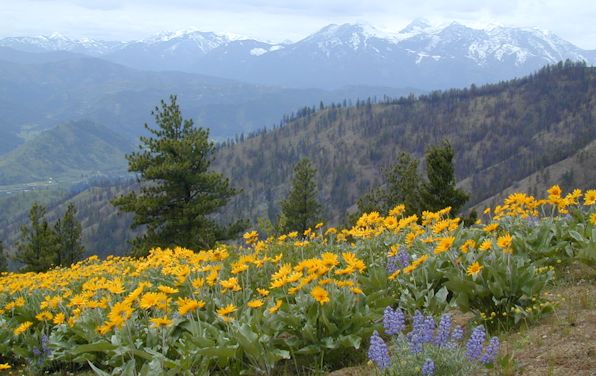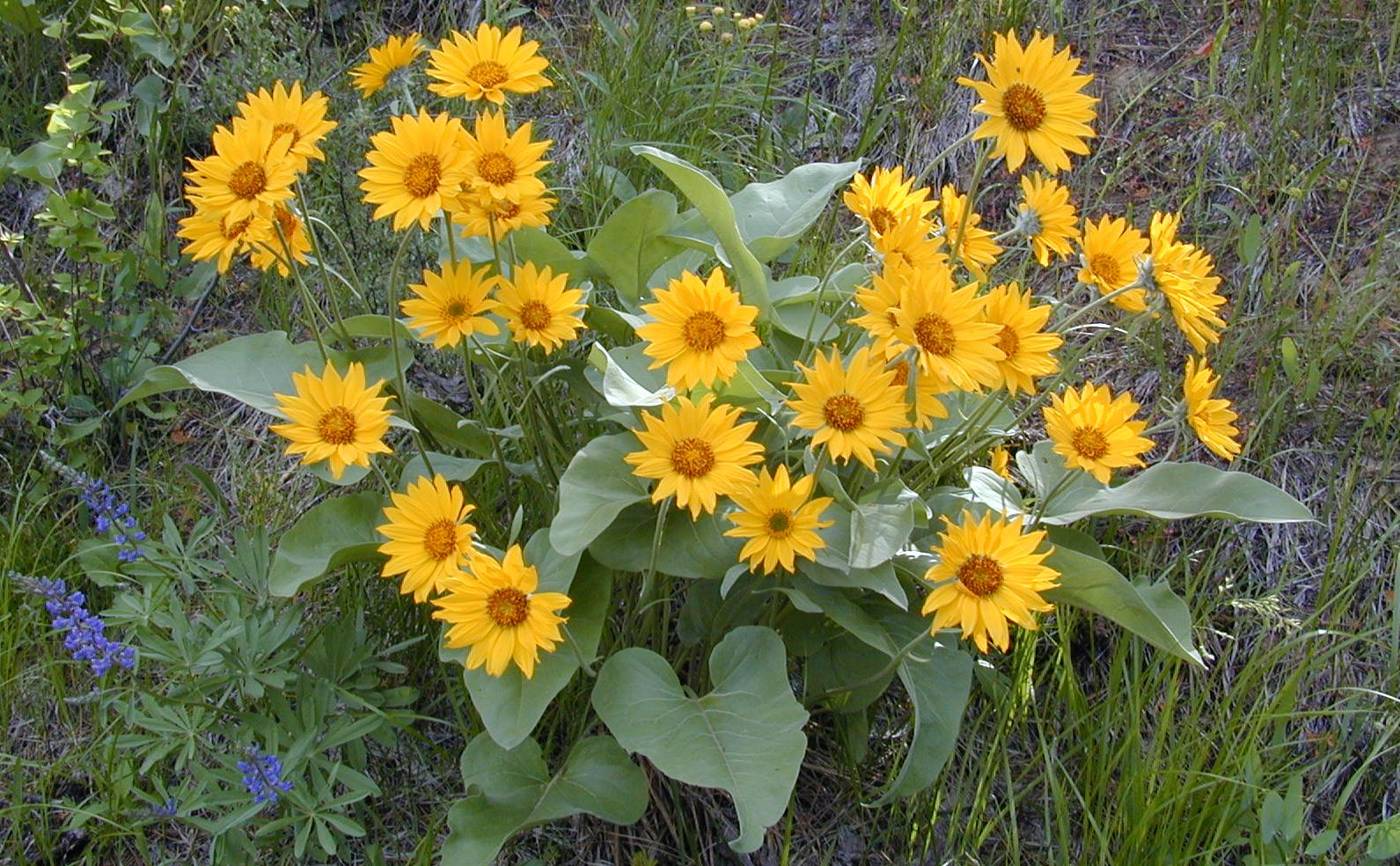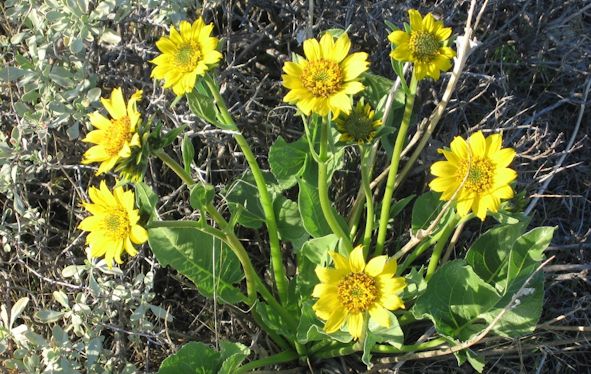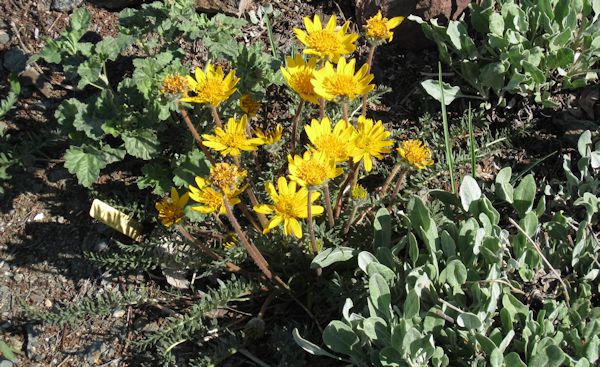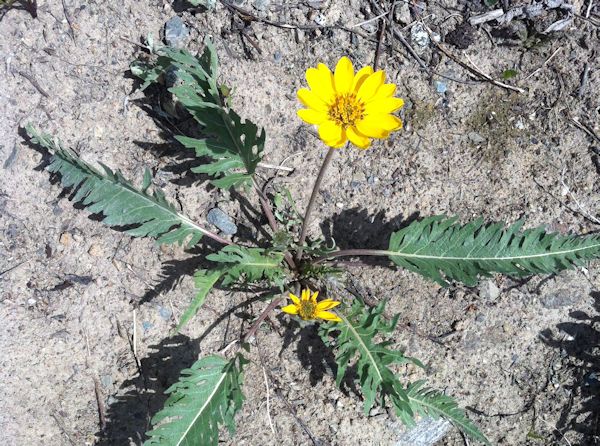Balsamroot time
Arrowleaf balsamroot (Balsamorhiza sagitata) may be the iconic wildflower of the east slopes of the Cascades in Washington. In a good year, like this one, the masses of bright yellow flower heads can light up entire hillsides. The grayish-green arrow-shaped leaves are up to 12” long and individual clumps can be several feet across. Native Americans ate all parts of the plant: the young leaves were eaten raw or steamed, the large roots were steamed or roasted and the sunflower-like seeds were ground into flour. I collect seeds in May on the hill above my house and can be surprised to find most of them nipped off; deer also like to eat them.
Arrowleaf balsamroot
I inadvertently learned the origin of the name “balsamroot”. I had hired a man with a tractor mounted trencher to excavate a trench up the hill from my orchard so I could install a new irrigation mainline. He went right through a large balsamroot clump and, peering into the depths, I could see the plant’s main root was still going 24” down and a strong resinous smell of balsam pitch came from its cut surface. This large taproot is key to the balsamroot’s drought tolerance, but also makes it difficult to transplant. In the nursery I grow the plants in deep tubes for no more than two years. I also advise anyone interested in planting them that it will be 3-5 years before their new plant will bloom, as it must first build up its large root.
Carey’s balsamroot
The arrowleaf balsamroot is not the only Balsamorhiza found in this area. As we move into drier areas and leave the Ponderosa pine zone behind we find Carey’s balsamroot (Balsamorhiza careyana); this species is similar in size to arrowleaf and has heart-shaped leaves that are bright green without the woolly hairs of arrowleaf. In lithosols (dry rocky soils) Hooker’s balsamroot (Balsamorhiza hookeri) appears; its look is quite distinctive, with finely divided leaves and a much smaller, lower stature.
Hooker’s balsamroot
The range of each of these species overlaps and it is common to find hybrids, with characteristics intermediate to the parents. I grew Hooker’s in one of my nursery display beds near a stand of arrowleaf balsamroot and I see this year it has produced an offspring unlike either parent.
Arrowleaf balsamroot x Hooker’s balsamroot
A similar plant with yellow, sunflower-like blooms is mule’s ears (Wyethia amplexicaulis). This species is often confused with arrowleaf balsamroot, particularly as their ranges overlap considerably. It blooms a somewhat later than arrowleaf and prefers a bit more moisture. You can distinguish it from arrowleaf by its long, elliptical leaves (like a mule!), its bright green, hairless leaves that appear varnished, and by its having 2 or more flowers per stem (all balsamroots have but one).
Mule’s ears
